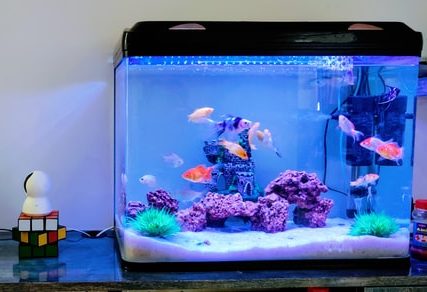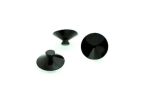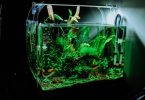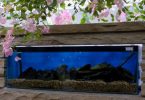Table of Contents
So, you are committed to the life of the fish, and want to begin your journey by knowing what it takes to set up an aquarium. Well you are few steps away from joining hundreds and thousands of fish owners around the world.
To get your new fish a good environment, here are instructions and pre-requisites which includes assembling and installing your new aquarium properly.
Also, some important information about the aquarium, the nitrogen cycle, and all you need to have, so it is time to begin.
Guides for setting up an aquarium
Step 1: Set up the aquarium
Emerging aquarists often neglect the first step in setting up an aquarium, it is the setup of the aquarium itself.
A lot of things must be taking into consideration for the setup, ranging from the size of the tank, to the equipment, and the appliances, and what purpose the tank will serve.
That is to say that before looking to set up an aquarium, you will have to consider the size of the fish you want to keep, the species of the fish, then you consider the size of the tank, as well as the equipment, and the water condition of the tank, after which you decide whether or not it will be a breeding tank.
Step 2: Getting the tank ready
As soon as you have all of your items ready, the first part of the setup is done, and your set up is on the roll hence the next thing to do is to get the tank ready for the purpose it will serve you.
You will have to clean the tank, make sure it is really neat before you consider installing the equipment you have and managing the water condition.
How to clean a fish tank for beginners
Get a cloth that is damp for wiping dust off the tank, preferably all the cleaning tools should be new, including the bucket and the fabrics, and the dampened piece of cloth or rag, and the use should be limited to the tank, so that there are no lurking health dangers in the tank before the set up.
If you bought an acrylic fish tank, know that the tank is delicate and be careful with the tank too because it can be easily scratched, also clean the acrylic tank with a soft piece of cloth.
Once you have cleaned the tank you will need to check for leaks. To find the leaks, fill the tank with some inches of water, then leave the water in the tank for about one hour, carefully run your fingers through the edges of the tank to confirm that there are no leaks; in case you find leaks, seal with an aquarium tank.
Then place your tank where it should be, away for the direct heat of the sunlight, but near power supply. Also confirm that the tank is strong because the tank will bear a lot of weight once water is added to it.
For instance, a fifty gallon tank will weigh one hundred pounds if it is empty, and will weigh six hundred pounds when it is filled. Hence, it is necessary to place the tank where it should be before filling it.
Step Three: Apply water and substrate
Once the tank is clean and well placed, the next thing to do is to get the substrate ready before adding water.
There are various kinds of substrate, so the substrate you choose should be based on preference as well as the kind of plant and the species of fish that will be in the aquarium.
Let’s say you intend to keep a catfish, sandy substrate is a better option. Follow the one lb. substrate per liter of water for a thick bed and a perfect substrate.
Washing your Substrate
Although the substrate usually comes washed, it is probably dusty and should be kept clean to avoid having a cloudy tank.
Rinse the chosen substrate carefully before adding it to the tank. To clean a substrate, put some amount of the substrate in a bucket and fill with cold water, then wrap the substrate round with your hand and keeping cleaning till the water is smooth.
If there are too many gravel, clean without a hose with high pressure. Some substrates (eg powdered coated gravels) do not perform well in this way and the water is very cloudy. You can then add the substrate to the tank.
- To add the substrate, first add a thin layer so that the bottom of the aquarium is not scratched, then pour in the entire substrate.
- As you pour them in, consider the parts of the tank you should let it rise slightly, perhaps burying plant roots.
- Now that the substrate is ready, the tank is ready for water.
- To add water to the tank, you have to decide if it is a freshwater tank or a saltwater tank.
Freshwater Tank
Do this with saucer to pour the water to prevent the gravel being disturbed. Once the tank is full with water, add a de-chlorinator to it following the instructions on its bottle.
Saltwater Tank
The water that should be used must go through osmosis and in reverse, and also use a de-chlorinator. There are instructions on the packet that will guide you on how to do this and also ensuring you are using the right amount.
Step Four: Install the equipment
After putting the substrate and adding water, you can start installing the equipment.
Aquariums need a filter, and the installation of filters is often determined by the brand an aquarist has chosen. Choose if you want an external filter or an internal filter.
-
The Internal Filter
They are easily installed. First assemble the required components, then put the filter on the wall that is at the back of the tank, and connect the wire to power.
If you have selected the underwater gravel filter, make sure to install it before adding water. Also be sure that the filter is firmly installed before turning the power on.
-
The external filter
For an external filter installation, it usually resides inside the stand that is below the aquarium.
This filter draws water out of the aquarium into an external box, where the water is being pushed by a water pump through a series of different filters, and sends the water back to the aquarium.
Equally see that both the outlet tube and the inlet tube are upright without bending so that the water can flow through freely.
Usually external filters have to be filled with enough water before they connected to power, that’s priming the system and it allows water flow through the filter.
If you have chosen a tropical set up or a saltwater tank, install a heater and set the right temperature.
If you have purchased any other equipment that needs to be installed like the lightings and the air pumps, you can install as well.
Step Five: Put your Decorations and Plants
The components are all set and are ready to function, you can now decorate the tank with plants and ornaments as you want it to be.
The plants, stones, driftwoods and ornaments, just stick with the plan you have and beautify your aquarium as you like.
Carefully clean any item properly before adding it to the tank so that it does not contaminate the tank with dust collected by its body. Then place it where it should be.
For plants, consider following the instruction that guides the plant for good result. Some plants have to be buried on the substrate directly, while there are plants like the java fern that have to attach a driftwood in the aquarium before they can be placed in the tank.
Always do research on plant placement to make your tank as attractive as possible.
Step Six: cycle the tank
What is the Aquarium Nitrogen Cycle?
Cycling is a vital process that contributes to the establishment of a healthy ecosystem in an aquarium. When you first set up a new aquarium, there aren’t enough beneficial bacteria to break down the toxic waste produced by fish.
Therefore, the cycling process entails adding ammonia to the tank (either through fish food or pure ammonia drops) in order to start the growth of helpful bacteria that will ultimately break down the ammonia into nitrites and then nitrates.
Once nitrates are present in the water, they can be removed by water changes or consumed by plants. The entire cycling process can take anywhere from a few weeks to a few months, depending on the size of the aquarium and the type of filter used.
The cycling process can cause ammonia and nitrite levels to spike to harmful levels for fish, so it’s important to monitor the water parameters frequently and perform partial water changes to keep these levels under control.
By properly cycling your aquarium, you create a healthy ecosystem where fish, plants, and beneficial bacteria can coexist. Setting up an aquarium and ensuring its longevity and good health require this action.
There are several ways to cycle a fish tank;
-
Freshwater cycling
When starting fresh water cycling, the first process you do is to add ammonia into your tank.
Read the instructions on the body of the bottle and comply with the instruction there, from the dose to the timing, everything should be done right by the instruction.
Run weekly tests in the aquarium to observe the levels and maintain them as well, pay particular attention to the level of the ammonia and to the level of the nitrite. You will notice that they rise and with time start to decrease.
As soon as the level of the nitrite and the level of the ammonia reach zero ppm, the freshwater is fully cycled and loaded.
-
Cycling the Saltwater
Saltwater is usually cycled with the use of live rock as that is the point of contact for the buildup of the bacteria.
Deliberately and constantly choose rocks that are lighter so that there are enough crannies and nooks for the buildup of the bacteria.
This whole process takes between six to eight weeks to be completes. If the levels of ammonia and the levels of nitrite have reached zero ppm, change the water by fifty percent to eliminate every buildup of nitrates. Then you can add the fish.
Step 7: Add the fish
This is the sole reason you have been through this entire process; to add your fish and become a practicing aquarist.
The number of fish you add should be determined by the size of your tank, you can begin by adding only an inch of fish to each ten liters.
Then get acquainted to your fish. Know that the fishes are very sensitive to any kind of change in the water, so once the fish is there the changes should be done gradually.
The current water level may be slightly different from the temperature of the tank, the salt and the PH. To be on the side of safety, put the fish in a different part of the tank and observe it for some weeks.
This is important as it helps the aquarist confirm that the fish is healthy and shows no sign of illness.
Congratulations! You now know exactly how you can set up the aquarium professionally, as well as to your taste, and your new aquarium is fully ready and safe for your new fish family member.







